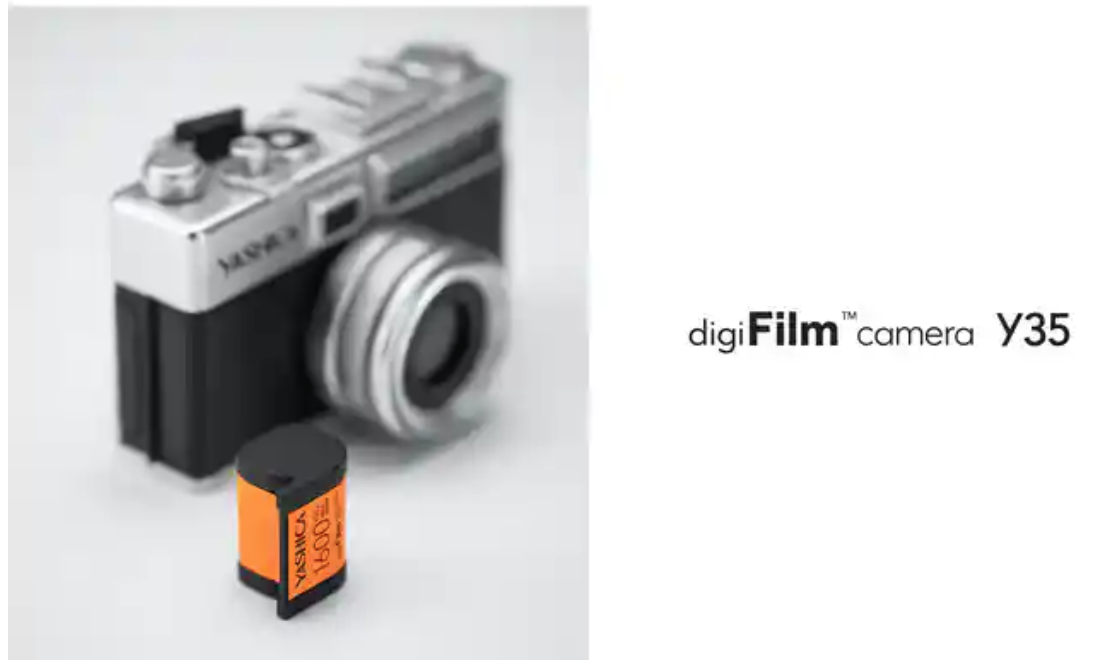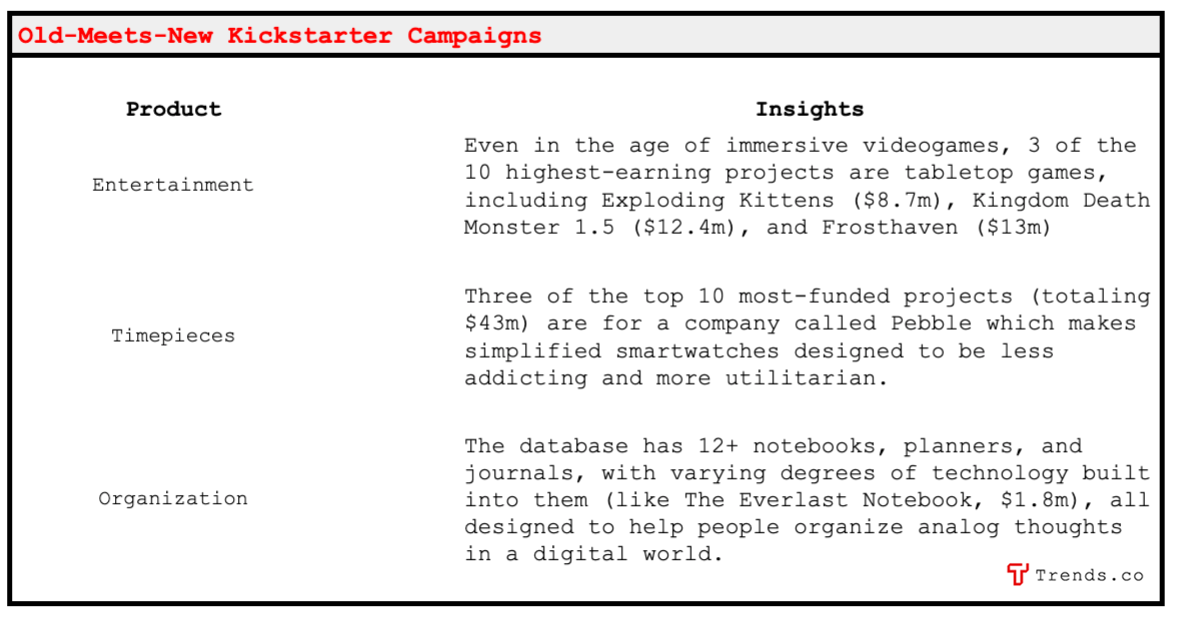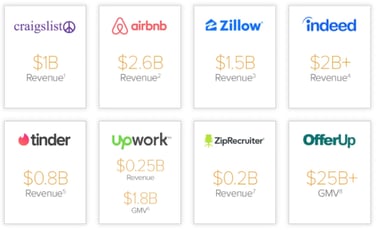nlopchantamang.com
Kickstart Your Market Research with Our Kickstarter Database
Ethan Brooks

Source: Data pulled from Trends Kickstarter Database
The Signal: One of the most important steps in launching any product is market research and verification. Successful crowdfunding campaigns, like the ones in our revamped Kickstarter database, offer an exceptional resource for founders.
Unlike search insights from Google Trends or other consumer browsing data, Kickstarter campaign backers commit money upfront (often before a product is even available to ship) proving that they’re not just casually interested, but willing to pay -- now.
With data from 2k+ successful Kickstarter funding rounds, compiled by Trends community member Francesco Deleo, the database includes:
- Financial metrics
- Campaign links
- Names of companies that collaborated on the campaigns
- and more
In this Signal, we’ll show you how to use the database to uncover the desires of buyers, plan your marketing, and identify key potential partners in the success of your product.
Identifying Mega Trends: Every campaign in the Kickstarter database met 100% of its finance goal, with some raising significantly more. These over-performers can help us find product ideas by uncovering the underlying desires of larger markets.
The digiFilm Camera by Yashica, for example, raised ~$1.3m, more than 12x its funding goal.

The digiFilm is a combination of old meets new -- a digital camera that records photos to an SD card but must be wound like an old film camera, and has removable cartridges that look like old film rolls. Rather than film, these cartridges are custom filters that change the look and feel of photos.
There is no technical need for removable filters in the age of Instagram and Photoshop, where users can manipulate photos endlessly on their device. DigiFilm’s popularity speaks to a deeper market demand: nostalgia -- the desire for a return to a simpler world, and for products that create a better experience by blending old and new.
“In both appearance and sensation, YASHICA Y35 recaptures the joy and meaning of analogue-photography,” the sales page says. “A brief pause is required to wind on the film before shooting. [This pause] grants us time to inspire and think… ”
Digging deeper into the Kickstarter database, we can find other examples of this desire. Categories that, like photography, have become largely digital are seeing successful old-meets-new products.

Marketing Research: Another valuable use of the Kickstarter database is marketing research. It’s not every day that you can find out exactly how much a certain marketing campaign earned. But by its very nature, Kickstarter puts that information front and center.
Each campaign page contains product images, sales copy, video advertisement, and pricing tiers, along with a record of which of those tiers was most popular (which indicates the market’s pricing sensitivity) and the total number of backers (which speaks to the size of the market).
By searching for products similar to yours, you can identify and deconstruct successful campaigns, and pull lessons for your own product sales, even if you’re not crowdfunding.
Finding Partnerships: In business, it’s not what you know but who you know that makes the difference, and the Kickstarter database helps you find the people and companies behind some of the most successful crowdfunding campaigns on the platform’s history.
Simply search for products or industries similar to your own to find people who have marketed successfully in those spaces.
One name you’ll see often -- The Crowdfunding Formula -- is a marketing firm run by Trends member Narek Vardanyan. They appear 7 times and have helped launch several multi-million dollar crowdfunding campaigns.
If you’re curious how a marketing firm spots products with 7-figure potential, they have a process:
- First, they search Kickstarter/Indiegogo for similar products that have met their funding goal.
- Using a tool like Bigger Cake, they analyze the funding curve of those lookalikes to determine whether demand is steady throughout the campaign, or whether major spikes point to the use of outside advertising to drive interest.
- If steps 1 and 2 are inconclusive, but they feel a product has promise, they’ll do a “jungle proof” test. They build a 3-page site (like this one), which includes:
- Page 1: Product Info and a “Learn More” button
- Page 2: More product info, price, and a “Buy Now” button
- Page 3: Tells visitors the product is launching on Kickstarter soon, and offers email opt-in to stay informed.
“We drive traffic [to jungle proof tests] through Facebook ads and carefully check the conversions,” Vardanyan told Trends. “If the appropriate amount of people click the Buy Now button... we change the price +-25% and drive traffic again to find the best price that the market is ready to pay.”


Leave a Comment